► More monolithic design
► More customisation options
► Black Badge gets darker and more extreme
The series II Rolls-Royce Cullinan has arrived, six years after the first one first rolled out of the brand’s Goodwood home. Bolder, more customisable and somehow even more monolithic than before, the Series II doubles down on everything the previous car has become known for. As with the previous version it’ll be available in a ‘standard’ form and a more aggressive Black Badge variant.
It looks imposing!
The Series II Cullinan retains the broad strokes of the previous model, which means it’s just as imposing as the previous car. The dimensions are the same of course, as is what Rolls Royce’s Director of Design Anders Warming calls the ‘design essence.’
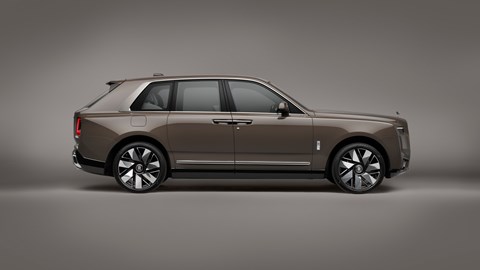
‘Many cars today can be nose down, rising upwards towards the back, but a Rolls Royce is the other way around: straight shoulders with a beautiful posture,’ he tells us. ‘It’s an upright flowing gesture, of course inspired by the Spirit of Ecstasy, adorning the beautiful bonnet.’
Although the essence of the new Cullinan is unchanged, the details that sit on top have been changed, with this update emphasising the tall, vertical aspect of the car.
The most obvious change has to be the DRLs, which have grown a vertical line in a very 2024-way. And, of course, there’s a little bit of extra detail in them. After extending outwards from the grille, they swoop down before terminating with two addition dots of light. The overall effect is like an ellipsis after a sentence.
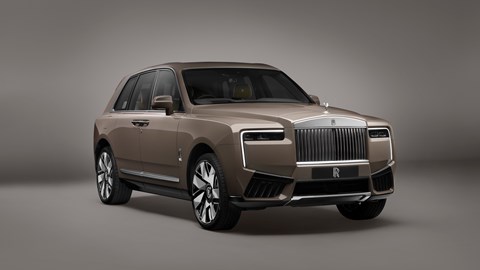
‘With these [new] daytime running lights we have a new icon, so there’s no mistaking when you see Cullinan Series II,’ he adds. But equally important is the bodywork around them:
‘We’ve added to the front end of the car a more monolithic appearance. If you remember you saw before, we have more of a layered elements on series I, but here we are celebrating the shape in a different way, adding more monolithic purities at the front, but particularly the surface underneath the headlights.’
The result is a car that’s even building-like than before, and even somehow has even more visual blunt force than the previous car.
The grille is relatively unchanged – as you’d expect – with extra elements around it making it look even more ‘grounded’ into the car than before. At this point, the front of the Cullinan looks more stable than the British Museum or Bank of England it borrows its front end from. It’s lit up, of course.
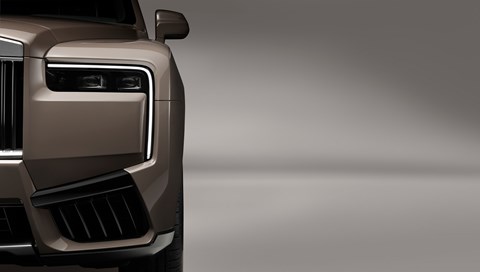
Look below that and you’ll see redesigned air-intakes that feature a shock-horror; diagonal line – which is a huge change from the straight, layered treatment of before. The intended affect is to echo the line of a bow wave on a moving yacht, to add some dynamism and movement to the new Cullinan.
Walk around to the side of the Series II and you’ll find it now sits on larger, 23-inch wheels. Although always too big, the Cullinan is one of the few cars that make them look sensibly sized. We’ve not driven it yet, but we’d be keen to see what the firm’s Magic Carpet suspension makes of them.
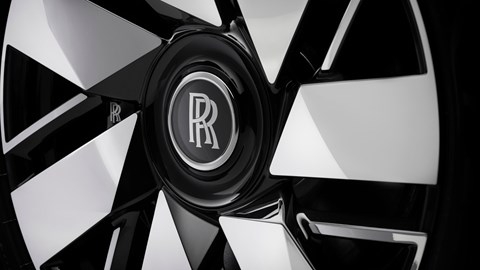
Finally, the Series II gets a new colour. Officially, it’s a brown – but somehow also purple or beige in person – marble colour called Emperador Truffle.
What about inside?
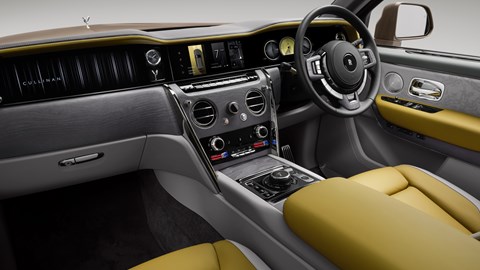
The inside of the Series II has been tweaked too, with a range of standard updates and others that help to create several more pages in the options list. The Cullinan gets the same dials and infotainment system as in the Spectre EV, with all the customisation options the Spirit system comes with – but there are more physical changes too.
The illuminated Fascia panel seen in the Ghost and Spectre is now available in the Cullinan, and there’s the usual mixture of leather, wood and chrome. New for the Series II, however, is Spirit of Ecstasy clock cabinet that sits embedded into the dashboard.
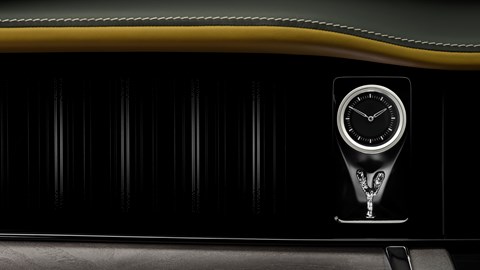
It’s smaller than the one on the exterior and stands backlit ahead of a clock. Tacky gift shop vibes, or another intricate feature that Rolls-Royce customers will love? Rolls-Royce designers says the latter, and they have a notoriously close relationship with their customers.
Elsewhere, the Series II gets two new options to tick; Grey Stained Ash as a trim, and then new textiles in the form of Duality Twill. The latter is an interesting monogram-patterned textile – in the mould of Burberry or Louis Vuitton perhaps – and takes around 2.2 million stitches and 20 hours of construction per interior. It’s the third version of the fabric; Rolls-Royce bosses demanded more sparkle and 3D-ness from a textile solution before it was able to be used in the Cullinan.
Leather returns for Cullinan Series II but now features intricate, perforated patterns with around 107,000 0.8mm and 1.2mm holes per interior. As you’d expect, each is inspected by hand…
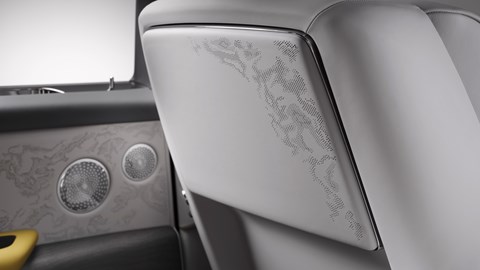
Is there a Black Badge?
There is, and after feedback from existing customers, Rolls-Royce has ensured it goes further than the Series I: ‘Today, self-expression, individuality and boldness are demanded more than ever before – all attributes that form the core of the Black Badge attitude,’ said Warming.
‘The dark, primal elements that are so essential to the Black Badge character are expressed here in extremis, and are further amplified by dramatic and assertive coachwork reserved for this disruptive expression of the brand.’
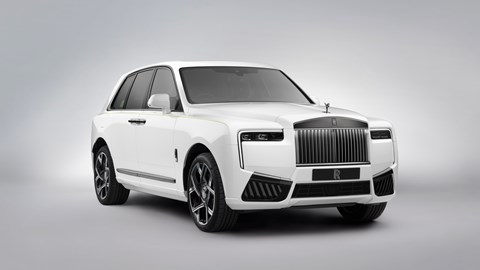
That means different, more dynamic air intakes at the front, and black replacing the chrome of the standard car. As you’d expect from the Black Badge, exterior details are also finished in black – including the Spirit of Ecstasy (and its new smaller sibling inside).
Black Badge owners also get the option to add exterior colour to the bumpers and lower bodywork elements, to add to the chunky, dynamic look. And like the standard car, it gets its very own 23-inch wheels too.
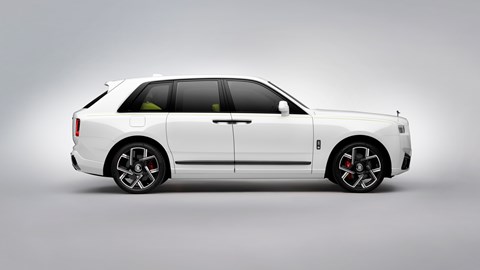
Will the interior of the Black Badge be different, too?
Expect the same dark treatment, along with lashings of carbon fibre which Goodwood calls Technical Carbon. As you’d expect it’s super labour-intensive; each piece gets six coats of lacquer is then left to cure for three days before being polished. This happens 23 times, for each piece in the car.
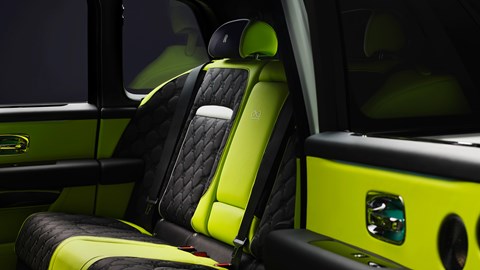
You’ll find the Black Badge’s own infinity logo around the interior, and it gets the same miniature Spirit of Ecstasy and clock as the standard car, though here it’s finished in black to further the darker, Black Badge vibe.
Check out our Rolls-Royce reviews